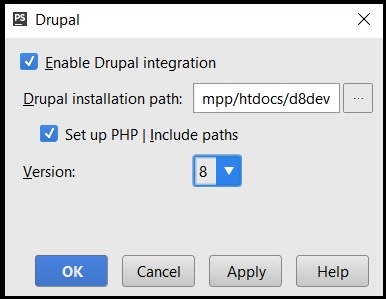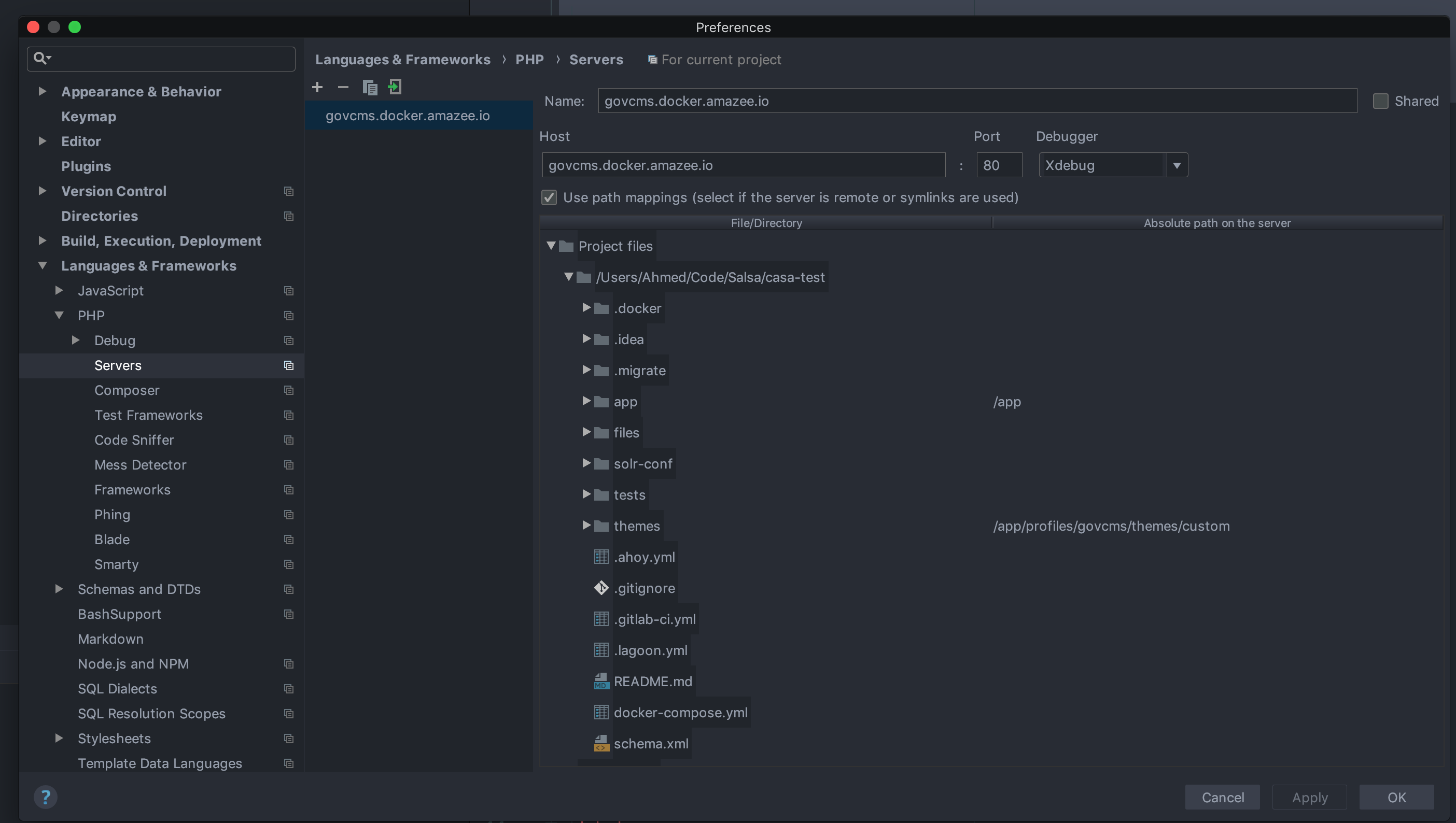

To profile the node view I visited in my browser. To give you an idea of what is possible, lets profile the work required to view a simple Drupal node.

#Phpstorm drupal how to
It teaches you, how to setup your PhpStorm IDE to debug your unit tests via the Xdebug PHP extension in Drupal 8. My main motivation for making the switch was the ability to have a integrated debugger - both when running Drupal in a web browser and via Drush.
#Phpstorm drupal code
The following article is valid for unix based systems like Ubuntu Linux. I recently made the switch from another (several) code editors to PhpStorm based on the recommendations of several members of the Drupal community - not to mention all the postive things Ive heard about it on IRC and various other places.

Submitted by Peter Majmesku on Sun, - 20:21. For my dev site I used the php.ini config you see above and simply added a URL parameter “XDEBUG_PROFILE=on” to my site’s url this starts Xdebug profiling from the browser. Drupal 8: Debug Tests in PhpStorm by Xdebug. For instance, if you are using Drush to run a migration, you can’t start the profiler on-demand, and that affects the profiler_trigger setting. Xdebug.profiler_output_dir=/tmp/profiler/ĭepending on what you are testing and how, you may want to adjust the settings for your site. To setup your environment, edit your php.ini file and add the following lines: To get going with profiling Drupal in PHPStorm and Xdebug you need: The more work your code does, the more information that the profiler stores file sizes for these logs can get very big very quickly. Whoa there cowboy! First you need to know that the act of profiling your code is itself taking resources to accomplish. If you want to know more about memory performance tracking you should check out Xdebug’s execution trace features. Note that Xdebug’s profiler does not track memory usage. PHPStorm tips for Drupal learn the keyboard shortcut for help->find action - it lets you search all of phpstorms menus for what you are trying to. In the next step, PHPStorm will ask you to select the root folder of the Drupal 8 project.

In the next screen, select 'Web server is installed locally, source files are located under its document root.' and press 'Next'. Open PHPStorm and select 'Create New Project from Existing Files'. Whatever the reason, if you have been tasked with analyzing the performance of your Drupal codebase, profiling is one great way of doing so. 1) Set up a project for Drupal 8 in PHPStorm. You might need to profile your site or app if you work at a firm where performance is highly scrutinized, or if you are having problems getting a migration to complete. On the Mappings tab, tell PHP storm how the remote path maps to the local path.Profiling is about measuring the performance of PHP code, at least when we are talking about Drupal and Xdebug.On the connection tab, enter the SSH details for remote server.Enter a name and pick SFTP for the type.Start creating a new Deployment configuration: Tools => Deployment => Configuration.Refer to Sync changes and automatic upload to a deployment server in PhpStorm and Remote Debugging in PHPStorm via SSH Tunnel for more detail. Remember kids, the debugger is your friend. Further, I’ll show how to configure the Debugger to step through remote execution of PHP CLI scripts. In the CLI, we can then run any drush command inside the drupal docroot and a breakpoint should trigger on the first line of drush.php. Click on the Magic Button to 'Start Listen PHP Debug Connections'. Once Xdebug is installed and the XDEBUGCONFIG variable set up, start a new project in PHPStorm. If the debug window pops up, bind the site name () to the source code (/home/.), and specify the servers location local folder is /var/Ctrl+Alt+S -> Languages and Frameworks -> PHP -> Servers. In bash, export XDEBUGCONFIG'idekeyPHPSTORM'. PHPStorm Deployments sync code from my laptop to AWS via SSH. Open the project root folder in phpstorm. Happily, PHPStorm thrives in this situation. My PHP has to run at AWS, and can’t run locally. This time, the Oracle database is behind an IP based VPN - I can only connect to it via a specific AWS instance that’s running our Drupal 8 site. Specifically, I’m again migrating content from an Oracle database into Drupal 8. Follow this answer to receive notifications. Unfortunately, my current consulting gig has strict requirements. This module allows to export PHPStorm Advanced Metadata in order to get autocomplete functionality and return type information for next calls: Drupal::service () ContainerInterface::get () EntityTypeManager::getStorage () Share. I’ve long preferred doing web development on my local laptop.


 0 kommentar(er)
0 kommentar(er)
